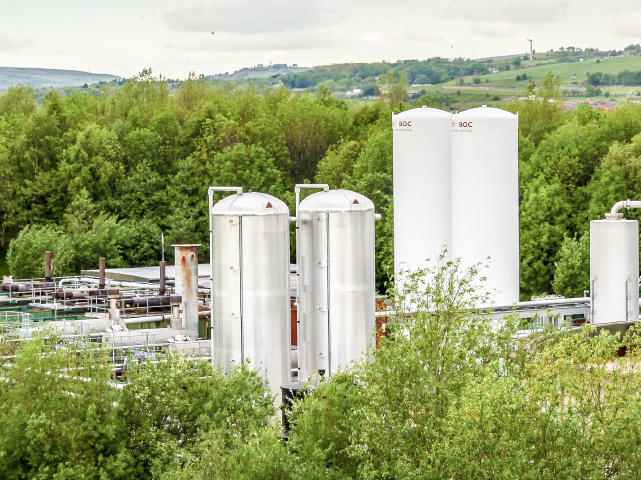A British energy company called Highview Power Storage, along with Encore Renewable Energy, a developer of renewable energy generation and storage projects, say they plan to build the United States’ first liquid air energy storage system somewhere in “northern Vermont”. This facility will be “a minimum of 50MW, provide in excess of eight hours of storage (400MWh).”
The Vermont facility will contribute to resolving the longstanding energy transmission challenges surrounding the state’s Sheffield-Highgate Export Interface (SHEI) and enable the efficient transport of excess power from renewable energy sources, such as solar and wind power to help integrate them on the power grid.
With Highview Power’s liquid air energy storage solution, excess or off-peak electricity is used to clean and compress air which is then stored in liquid form in insulated tanks at temperatures approaching 320 degrees below zero Fahrenheit (-196 C). When electricity is in high demand and more valuable, the pressurized gas is allowed to warm, turning a turbine as it expands and thus generating energy that can be used at peak times when the sun is not shining and the wind is not blowing.
Highview Power’s proprietary liquid air energy storage system is called CRYOBattery. The company says it has “zero water impact and can be delivered at a cost of approximately half of the current cost of traditional lithium-ion batteries. “


 Return to the Concord Monitor
Return to the Concord Monitor
What effect does it have to the environment? If it were to leak or blow up? If there was a fire? Things happen that are not always expected.
Less environmental effect than burning more coal, or building another large hydropower dam, or burning more natural gas, or doing almost anything else to produce large amounts of electricity. But yes, it’s not a perfect solution and the unexpected can always happen.
Leak liquid air into the air? Gee it would warm up and dissipate into the other air.
Blow up – how? It is air. It doesn’t burn.
Dry air is, by volume or mole fraction, 78% nitrogen, 21% oxygen, 1 little less than 1% argon, 0.04% CO2, and smaller amounts of everything else. Wet air has less than 1% water vapor in it.
Release of these gases is environmentally harmless, although rapid boiling of the liquid would probably destroy the container, and a cold gas like N2 at 77K or O2 at 90 K (90 degrees above absolute zero) could do a lot of physical harm to living things, but such a gas would warm up extremely quickly.
Another advantage of this process, were it sufficiently sophisticated, is that fractional distillation of the condensate would allow the separation of argon (useful for inert atmosphere metalwork, among other things) and oxygen.
Even a small amount of CO2 could be separated and sequestered, rather than released to the air.
In my opinion*, this is an interesting and potentially valuable means of temporary energy storage, much simpler than pushing water up hill.
*Just my $0.02 as a retired chem prof.
How much energy does it take to liquify air and then keep it cold enough in storage for long periods of time? What are the costs of the storage containers and infrastructure and what lifespan does it have?
Those are all good questions that will come up during the approval process. I don’t know how much, if any, of this cost would be put onto electric ratepayers in Vermont – that will really trigger regulatory oversight.
Compressing air will not freeze. It will have the opposite effect of heating it up. To liquify it, it will need to be super-cooled, much like how methane (natural gas) is turned into liquid (LNG).
Freeze it! Don’t squeeze it!